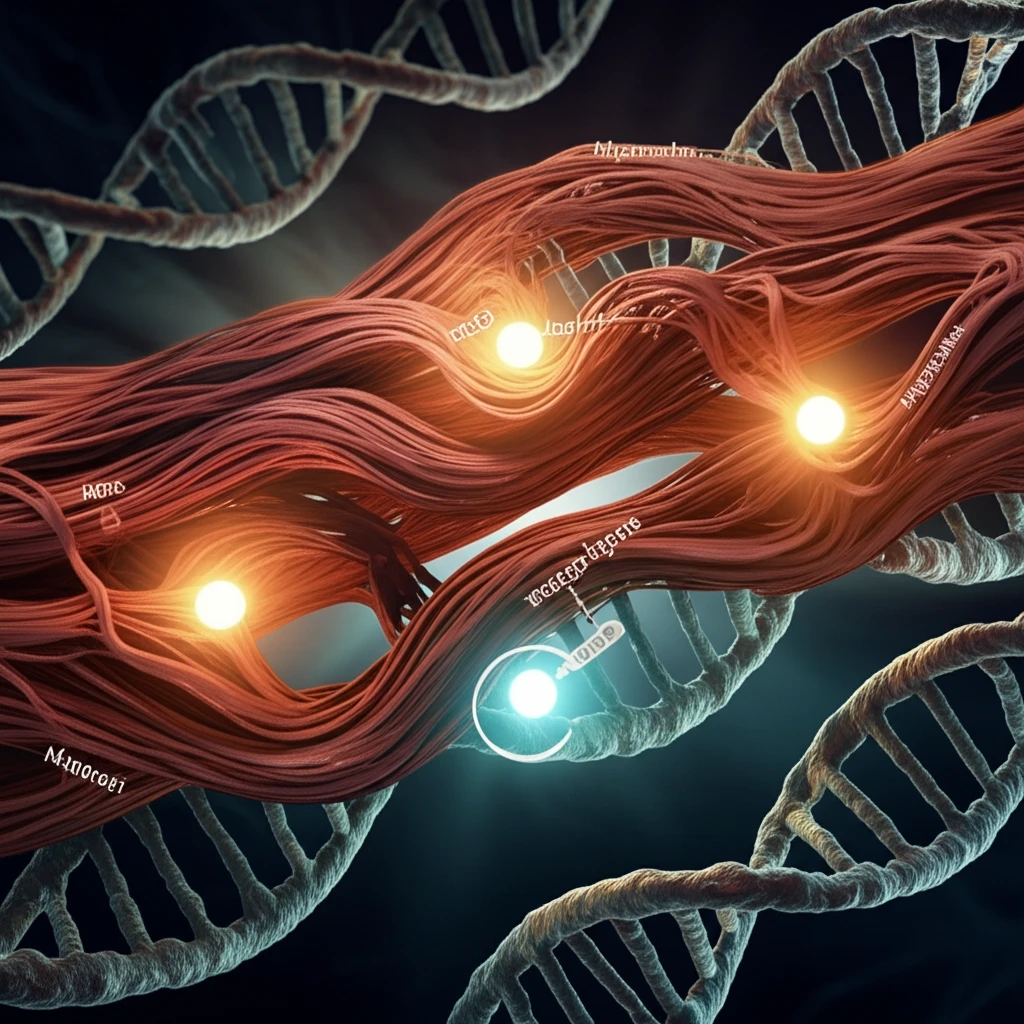
Unlocking Muscle Mysteries: How Genes Shape Growth and Fusion
"New research reveals the distinct roles of key genes in muscle development and offers hope for understanding muscle-related disorders."
Our bodies are intricate tapestries woven from countless cells, each playing a vital role in maintaining our health and function. Among these, muscle cells, or myofibers, are essential for movement, strength, and overall vitality. These myofibers aren't simply built; they're carefully constructed through a process called myoblast fusion, where individual muscle precursor cells merge to form larger, multinucleated fibers.
Imagine these precursor cells as individual LEGO bricks, each needing to connect precisely to create a strong, stable structure. When this fusion process is disrupted, it can lead to a range of muscle-related problems, including inherited muscle diseases. Understanding the genes that orchestrate this fusion is crucial for developing effective treatments and therapies.
Recent research has shed light on three key players in this intricate process: the Jamb, Jamc, and Myomaker (Mymk) genes. These genes are vital for myoblast fusion, and their dysfunction can impair muscle development in organisms like zebrafish. While we know these genes are important, their specific roles and how they interact to influence muscle growth have remained a puzzle – until now.
Decoding the Roles of Jamb, Jamc, and Myomaker

A new study, published in Marine Biotechnology, has delved deeper into the functions of these genes, particularly in zebrafish. Zebrafish are excellent models for studying muscle development because their transparent embryos allow scientists to directly observe the fusion process in action. The researchers focused on understanding how mutations (or alterations) in the Jamb, Jamc, and Mymk genes affected muscle development and growth.
- Jamb and Jamc: While these genes are initially needed for myoblast fusion in early development, they appear to be dispensable for muscle growth later on. Zebrafish with mutations in Jamb and Jamc could still grow into adulthood with normal muscle fibers.
- Myomaker (Mymk): This gene is essential for myoblast fusion throughout the entire muscle development process, from the earliest stages to adulthood. Mutations in Mymk led to reduced muscle growth and other severe defects.
- Jamb and Mymk Together: Combining mutations in Jamb and Mymk resulted in similar defects to those seen with Mymk mutations alone, suggesting that Mymk plays a more dominant role in muscle development.
What Does This Mean for the Future?
This research provides valuable insights into the complex genetic mechanisms underlying muscle development. By understanding the specific roles of genes like Jamb, Jamc, and Myomaker, scientists can potentially develop targeted therapies for muscle-related disorders. For example, future treatments might focus on enhancing Myomaker function to promote muscle growth and repair in individuals with muscle diseases or injuries. While more research is needed, this study marks an important step forward in unlocking the mysteries of muscle development and paving the way for innovative therapeutic strategies.
